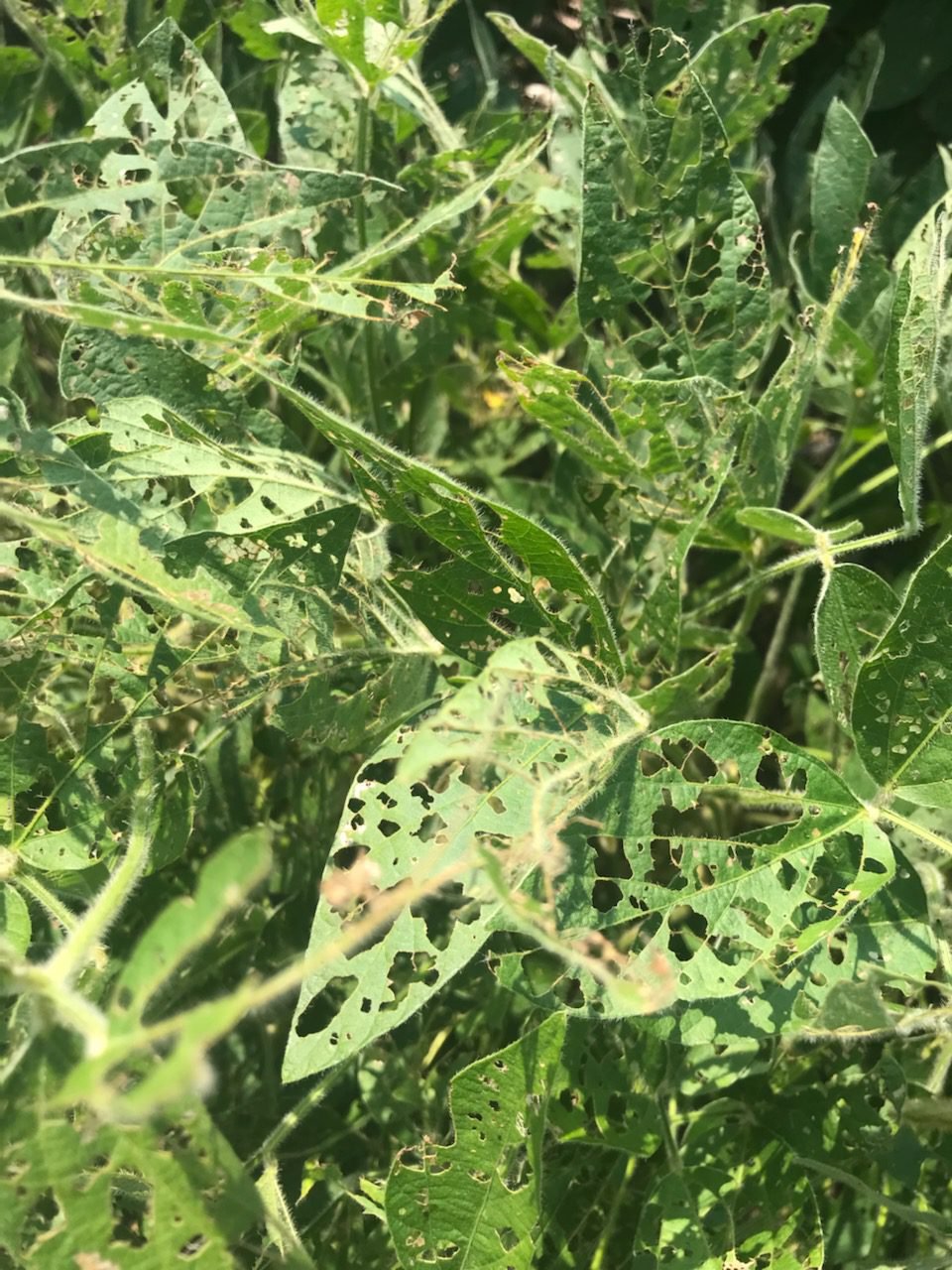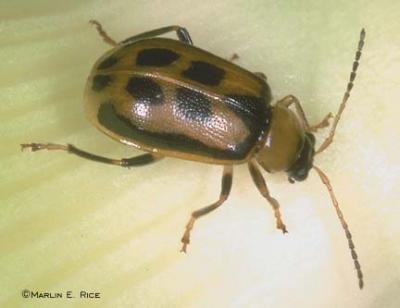Dinner is Served: Hungry Insects Are Targeting Your Soybean Crop
By Jeff Shaner
AgVenture Soybean Product Manager
These pictures were taken just this past Friday in Eastern Illinois. The grower was taken aback at how severe this damage from Bean Leaf beetles has become and in such a short amount of time. At a time when many farmers are looking forward to harvest beginning a few weeks down the road, we cannot become complacent about what is happening in your fields. If the crop is not in the bin, the opportunity for loss is still present. At this moment, your soybeans fields look like an all-you-can-eat buffet for pests like bean leaf beetle, stinkbugs, Japanese beetles, grasshoppers, Corn Rootworm beetles, Fall Armyworm, and more.
Pod fill is the #1 portion of the soybean growing season where yield can be made or lost. Let’s look at several questions that need to be answered right now, starting with:
(Photo by Jeff Shaner) Bean leaf beetle damage in eastern Illinois, late August 2021.(Photo by Jeff Shaner) Bean leaf beetle damage in eastern Illinois, late August 2021.“What stage is my crop in?”
If you have weeks of pod fill yet to go, and your leaf-feeding across a large portion of the acreage is 25% or greater, then significant yield loss is a high probability. You cannot allow the bugs to decimate your crop at this highly yield-sensitive time of the year. Be prepared to act FAST. Waiting several days could be a major hit to your bottom line.
“Is the crop made at this point and treatment will be a waste of resources?”
Many soy acres across the Midwest are starting to mature. You can see the general canopy yellowing. Seeds in pods appear swollen and ready to start finishing off. You may have some fields in this stage, and others nowhere close to maturing. Just as you treat every crop year as possessing its own personality and set of playing rules, also treat each individual field as unique in its needs and subsequent course of action. Should you determine that leaf feeding is no longer going to cause great financial harm, then ask yourself this next question.
(Photo by Marlin E. Rice)Bean leaf beetle with typical coloration and markings.Will these pests become pod feeders as well?”
Pods that once displayed great potential are now laying on the ground. Pods that started out with 3 or 4 seeds, only finished with 2 or 3 reaching maturity. What went wrong?
Bean Leaf beetles become pod feeders as leaves lose their tasty appeal. They will scrape off the pod wall and allow fungi to invade.
Grasshoppers aren’t so subtle. Their strong mouthparts chew right through pod walls and take bites out of seeds.
Stink bugs don’t cause great visual damage to the pod. Their piercing mouthparts leave little to be viewed except for the resulting damaged seeds from the digestive enzymes they inject.
Corn Rootworm beetles are now leaving corn fields looking for a fresher meal. Not only can they clip pods, but they may also be laying eggs to overwinter on your soybean residue.
Fall Armyworm came soaring in on weather systems recently and heard the dinner bell ringing at your farm. Tissue damage thresholds register at as little as 15% during pod fill. Finding 10-15 per 25 sweeps should have your attention, or more than 3 per row foot. Keep in mind that these may be resistant to some insecticides, and if most of your worms are more than an inch in length, you may be too late.
Never give up on the crop folks. Double-digit losses are a reality this late in the game. The cost of treatment for many of you will be less than the price of 1 bushel of soybeans. Talk to your AgVenture Yield Specialist. Get good advice. Make sound decisions with an eye towards Maximum Profit.
(Photo by Lexie Maloy) Stink bug on soybean plant in northeast Iowa, late August 2021.






